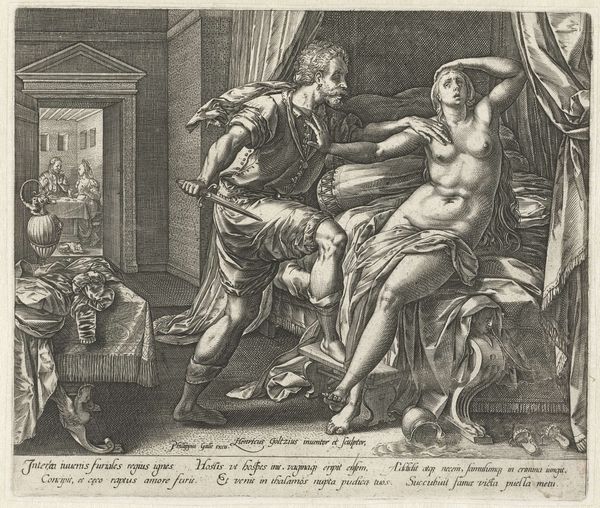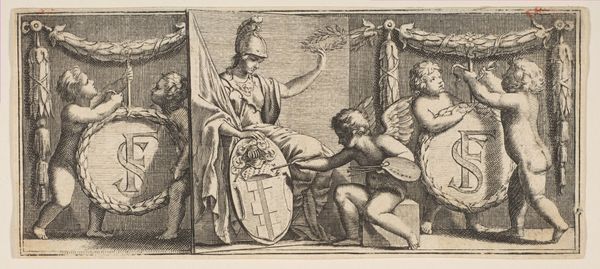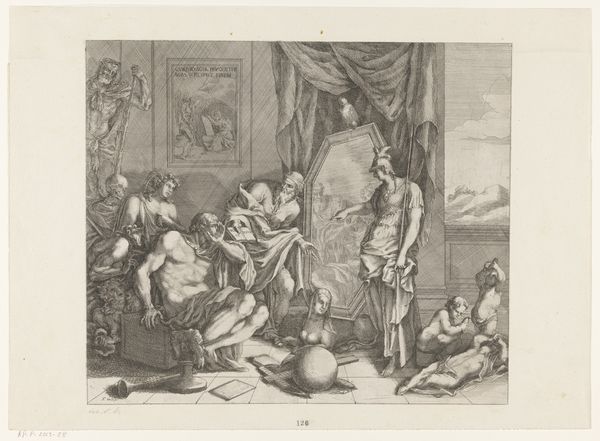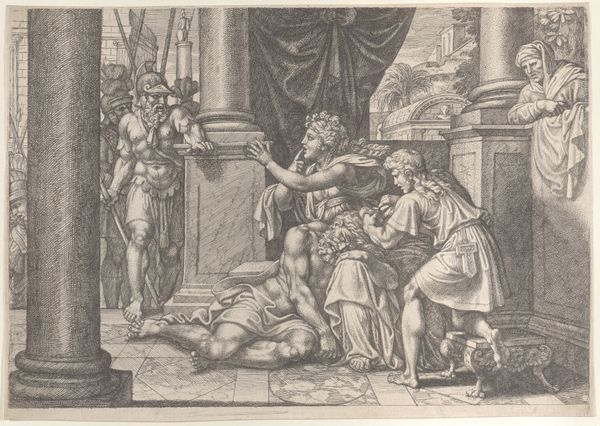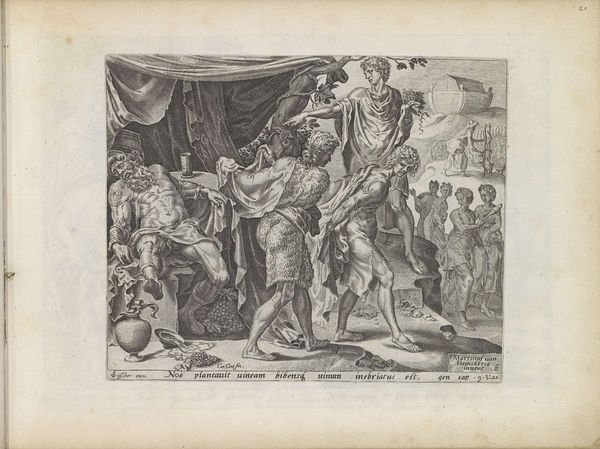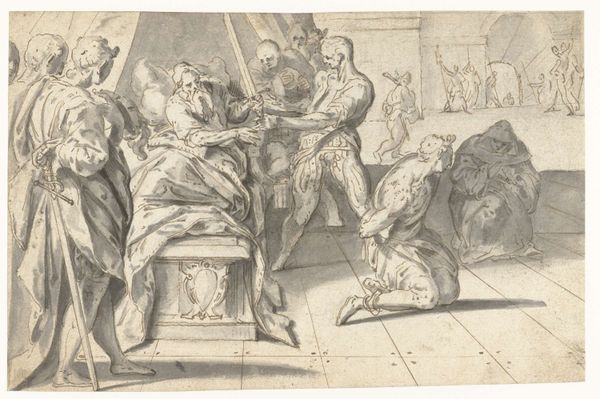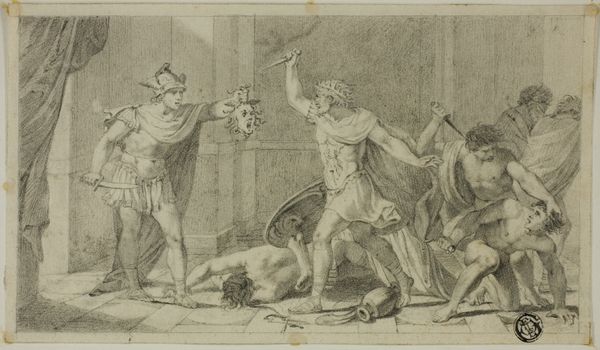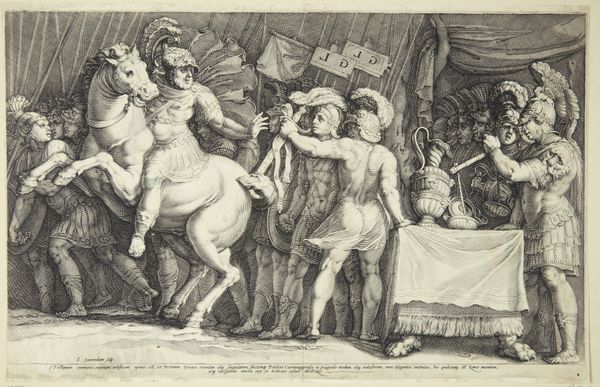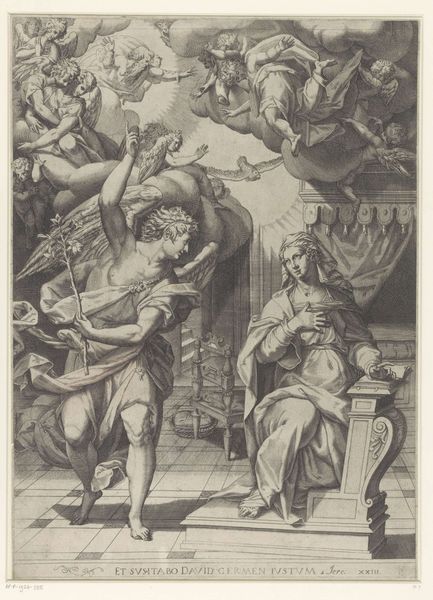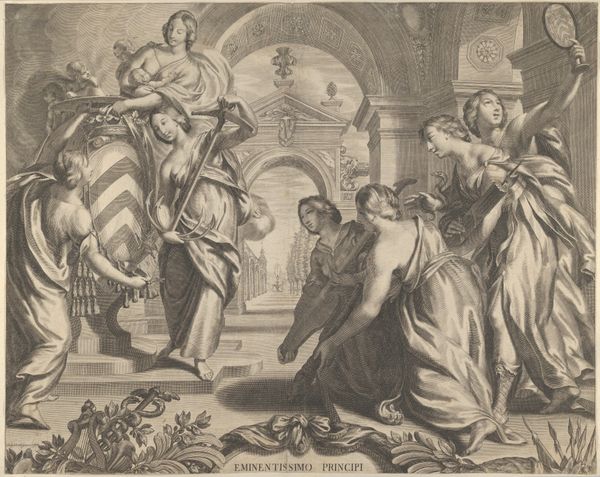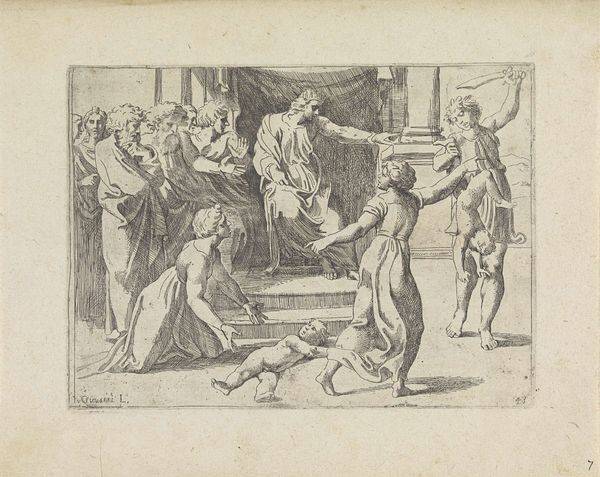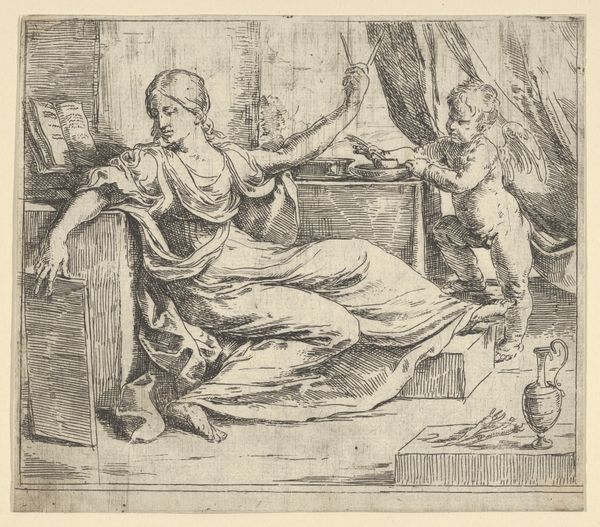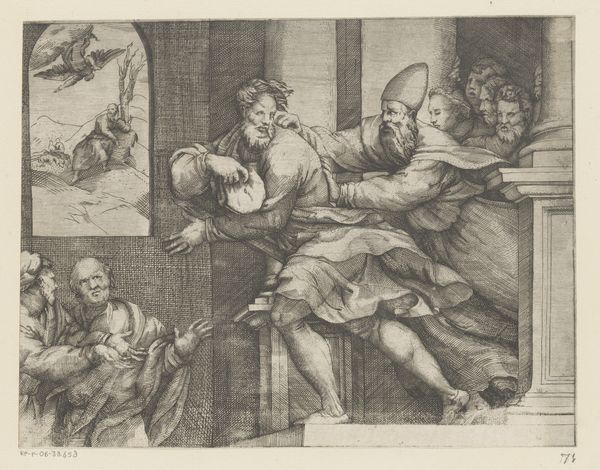
Tarquin attacking Lucretia, a servant at left witnessing the scene 1520 - 1582
0:00
0:00
drawing, print, engraving
#
drawing
# print
#
mannerism
#
figuration
#
female-nude
#
history-painting
#
italian-renaissance
#
nude
#
engraving
Dimensions: sheet: 9 7/16 x 13 3/8 in. (24 x 34 cm) plate: 8 7/8 x 13 1/8 in. (22.5 x 33.3 cm)
Copyright: Public Domain
Editor: This engraving, "Tarquin attacking Lucretia," created sometime between 1520 and 1582 by Giorgio Ghisi, depicts a rather violent scene. There's a lot of drama captured in the figures' poses, especially with that look of terror in Lucretia's face and the menacing stance of Tarquin. How should we interpret this dramatic scene within its historical context? Curator: This print captures a pivotal moment, rife with socio-political undertones. Lucretia's rape by Tarquin isn't merely a personal tragedy; it's famously considered the catalyst for the overthrow of the Roman monarchy and the establishment of the Roman Republic. Consider how Ghisi uses the visual language of Mannerism – the exaggerated poses, the dramatic lighting – to heighten the emotional intensity and, arguably, to critique power. Editor: So, you’re saying this isn’t just about the event itself, but also about the commentary it provides on authority and its abuse? How would this have resonated with viewers at the time? Curator: Absolutely. The story of Lucretia was a well-known moral lesson. Think about the print's accessibility too; as a reproductive engraving, it circulated widely. It would have brought these ideas – of resistance against tyranny, the importance of virtue, and the consequences of unchecked power – into homes and public spaces. What do you make of the inclusion of the servant in the image? Editor: It’s a stark reminder that these power dynamics play out across social classes. And I see how making a print allows for much wider access, taking it out of the hands of just wealthy patrons. Curator: Precisely. By analyzing its circulation, we understand how Ghisi's work functioned as a powerful form of social and political commentary in the Italian Renaissance. Editor: This discussion has definitely changed my view; it's not just a scene of violence but a statement on the political climate. Thanks for that insight. Curator: My pleasure. It is vital that we consider artworks not only as aesthetic objects, but as crucial components of the historical narrative.
Comments
No comments
Be the first to comment and join the conversation on the ultimate creative platform.

